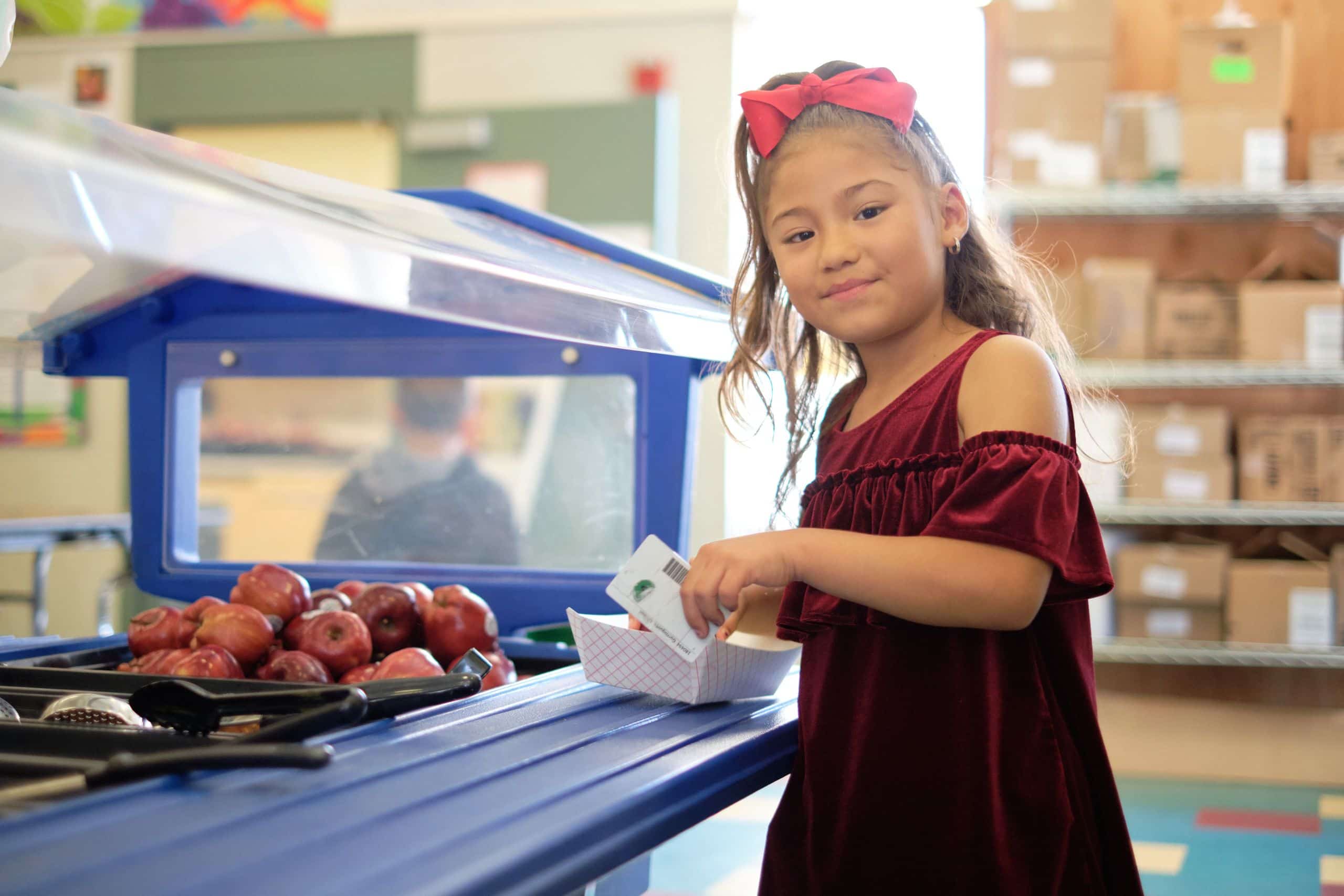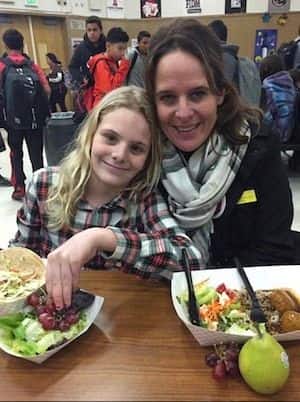Whole Kids Foundation: What did lunch look like when you first visited the school cafeteria?
Katie Aaron: When I visited my children's lunchroom eight years ago, they served frozen round pizzas in plastic bags three times a week, chocolate milk, canned fruit and vegetables, chicken nuggets, enchurritos and corn dogs.
Today, none of these items are on the menu. Instead, there are only fresh seasonal fruits and vegetables like watermelon, strawberries, plums and even kiwi. In addition, chicken and bean burritos, pizza once a week, hamburgers with local grass-fed beef, BBQ chicken sliders, carne asada tacos and cheese ravioli to name a few. A new favorite with the students is posole! Many of our elementary kitchens also have milk from a machine, which the kids love.
What were the first small steps you took and why?
Katie Aaron: The first steps I took when looking into our local food services program was to research our board policies in regards to student nutrition. I became aware that not only were they outdated, but many of the policies were not being enforced, like competitive food sales going on at our middle schools. Next, I researched what other districts in the area were doing different and how they were affording to provide better quality food options to students. After educating myself on the ins and outs of the Federal School Lunch Program and State of California expectations, I contacted the district and asked to be part of the Health and Wellness Committee. It is on that committee where I got in touch with our food service director and asked for a meeting. This initial meeting was very disappointing but inspired me to be fully committed to bringing about change through persistent advocacy in regards to student nutrition. There was nothing more disheartening than children going hungry, because they were rejecting poor quality food, and yet being expected to learn in the classroom. Hunger and learning do not go hand in hand.
What advice can you give to parents looking for easy, impactful things they can do to improve the food offered in their local school cafeterias?
Katie Aaron: Do some initial research, meet with the food service director and share your concerns and desires. Attend school board meetings and look for other local parents that have the same interest as you in changing the school food options. Change will not come overnight and more than likely, it won't come within a year. School district budgets and attitudes toward child nutrition might create some road blocks, so find your "people". Every district has a person who understands the connections to learning and healthy eating.
What are examples of specific goals parents can work towards early on in their journey?
Katie Aaron: A specific goal I had when I first started was getting rid of the huge amounts of sugary, processed foods on our menus. I began with chocolate milk. The county I live in just so happened to have a very high childhood obesity and pre-diabetes rate in comparison to neighboring counties. I used local health studies to support my cause for getting rid of items that have a direct link to childhood diseases. It is extremely important to have data that supports your reason for change.
Whole Kids Foundation: How can parents use their voice to advocate for change in both big and small ways?
Katie Aaron: Use the District Health and Wellness policy to support small changes at your neighborhood school your children attend. Take a look at what parents are bringing to parties, snacks for the classroom and extracurricular activities. Hopefully your principal is on board in following the policies. Next, on a larger scale, go meet with your county health officer and learn about what other agencies in the area are doing to support childhood nutrition. Finding agencies who work together on advocating for children can be a great resource for support and data.
In addition to better food, what are some of the benefits that you’ve seen with the transformation of Napa's school lunch program?
Katie Aaron: The changes in our school lunch program are also creating a broader sense of awareness in regards to food waste, the value of school gardens and lessening our carbon footprint. Compostable products are being more widely used. School gardens are making connections to the cafeteria through nutrition education "garden-to-table" tastings with elementary school-age children. This year, a new garden class started at my child's middle school. Students are in the garden, planting and learning about a variety of health benefits on a daily basis. Finally, the finances: processed packaged food is expensive! Make sure to address the financial outlook of the food service program.
Can you share any other advice with other parents who are advocating for healthier options at their local schools?
Katie Aaron: Taking an active role in bringing about change to your local School Food Nutrition Program can be very overwhelming. However, know that there are so many resources, like the Chef Ann Foundation Parent Advocacy Toolkit, to help guide you on your journey. Don't give up — our future depends on this type of advocacy work to provide a healthier future. There can be major financial and educational benefits for your district when they take the steps to bring about change in the lunchroom.
Interested in securing a Get Schools Cooking Grant for your school district? The next application window opens January 2021; learn more now to prepare for positive changes in the future.




